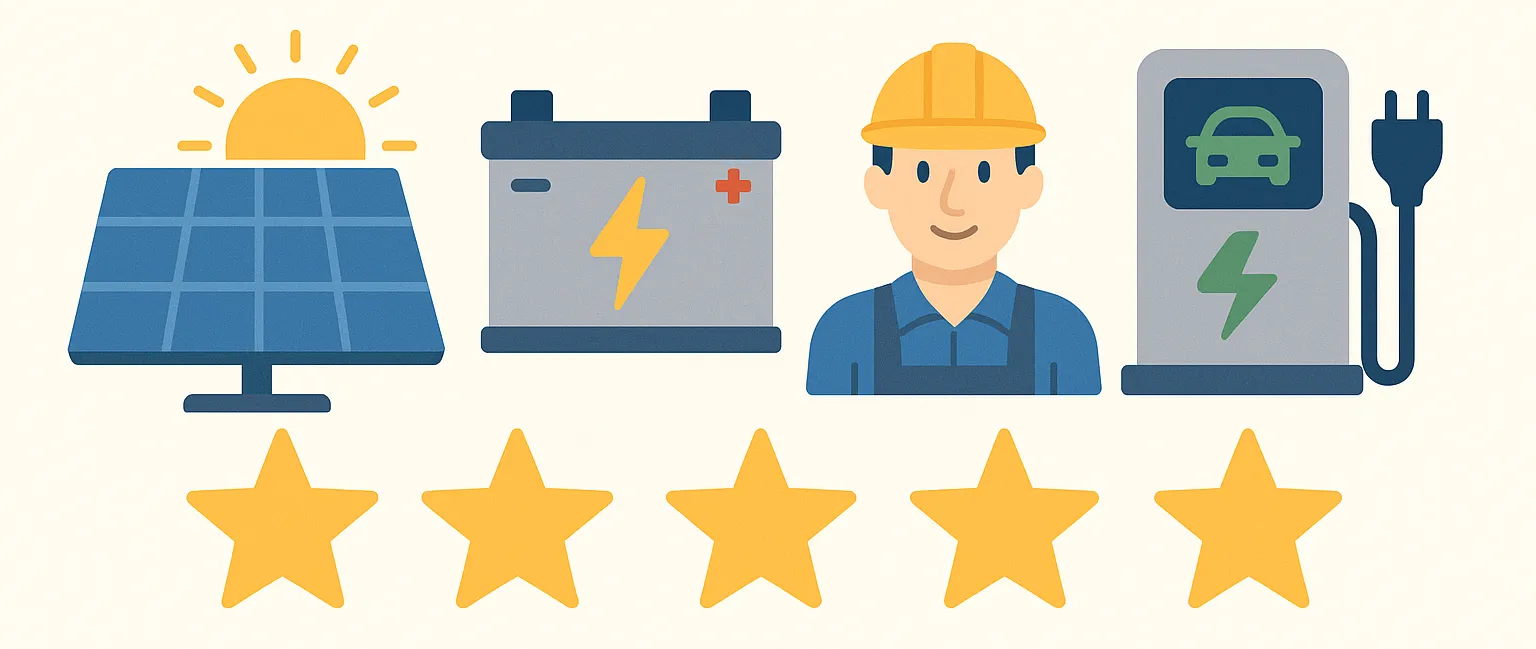By this point, there’s no denying how impressive solar panel technology is, allowing us to effectively harness the power of the sun and act as a prime source of renewable, green energy. However, there’s one serious and obvious problem with solar panels, which is that they don’t do much good during the night or when the sunlight is otherwise unable to be harnessed. While this seems like an obvious complaint – they’re called solar panels, after all – it’s still a problem that comes with its own issues and necessitates specific solutions.
The best solution that we have right now is battery storage technology, which allows anyone with solar panels to store any excess electricity, rather than letting it go to waste. In this blog, we’ll explore how battery storage technology works, its pros and cons, as well as how to choose the perfect battery for your needs.
How Do Solar Panels Work?
Before we get started, let’s get back to basics. How do solar panels work? They take advantage of the incredible amount of power that the sun creates – in fact, every hour, the sunbeams more energy onto our planet than we all use in an entire year. To take advantage of this, solar panels are made up of many, many silicon solar cells. When a photon hits one of these solar cells, they knock an electron loose from their atom. This generates a flow of electricity, allowing you to power whatever you need.
Any excess electricity that your solar panels produce gets exported to the grid, and, if you need more electricity than your solar panels are capable of producing, you can draw from the grid. However, if you’re unable to draw from the grid for whatever reason – extreme weather, utility shutoffs, and more – then you’re out of luck. Your solar panels can feed you power for as long as it’s sunny, but that can only go so far.
Solar Panels and Batteries
This is where a battery storage system can come in. These batteries allow you to store any excess electricity produced by your solar panels for when you need it the most. When your solar panels aren’t producing electricity, you can then draw electricity from your battery system. You’ll be able to function “off-the-grid” with a battery, allowing you to make sure you still have power even in the most unfortunate of circumstances.
Individual batteries can only provide backup power to so many devices at once, meaning that you need to chose which critical systems you need to keep powered up. However, there are several ways to work around this limitation. A handful of companies are working on smart electrical panels that can more efficiently and effectively divvy out power from your battery. It’s also possible to “stack” batteries, meaning you can just keep installing new ones until your energy needs are met.
How To Choose a Battery
Now, there are several factors you need to look at when choosing a battery, whether you need one for your home or your business. We’ll take a look at all of them and explain exactly what they mean.
Power rating refers to how much power, measured in kilowatts (kW) you can get out of your battery at once. Different devices and appliances will draw different amounts of power from your battery for different situations, so it’s important to know what your power needs are. There are also different types of power ratings: continuous vs. instantaneous. The continuous power rating will tell you how much consistent power you can draw from your battery, while the instantaneous power rating lets you know how much power you can draw in one burst.
Next is usable storage capacity, which refers to the storage capacity of your battery. The better the usable storage capacity is, the longer your battery can power parts of your home or business. The capacity of your battery, naturally, is affected by how many devices you use at once and how much energy they need. Your storage capacity will last longer if you power just one lightbulb compared to powering ten of them.
Round-trip efficiency measures how well your entire energy storage system – your battery and the inverter – can convert and store electricity. In simpler terms, this refers to how much energy that is put into your battery can be used. You’ll always experience some power loss from electricity in vs. electricity out.
Finally, we have battery lifetime, measured by throughput and cycles. A battery’s throughput refers to how much electricity you can move through your battery over its lifetime. A battery’s cycles refer to how many times you can charge and discharge a battery. Overall, you can determine your battery’s total lifespan with this information.
Conclusion
There’s no denying just how important solar panels are as a renewable energy source. However, in the case that you can’t draw power from them, for whatever reason, it can be hugely beneficial to pair them with a battery storage system. With a good battery storage system, you can ensure that you have electricity for all of your needs.
